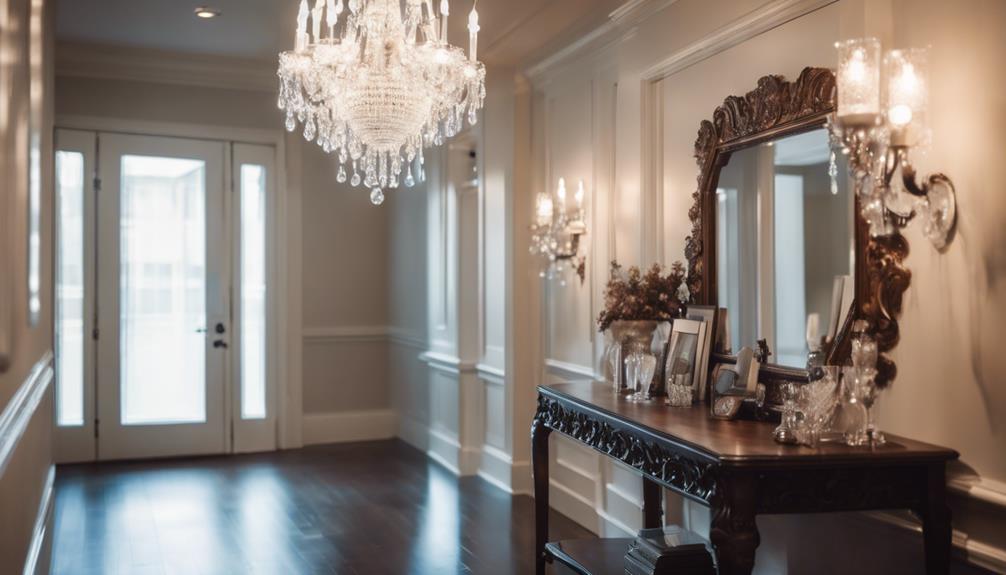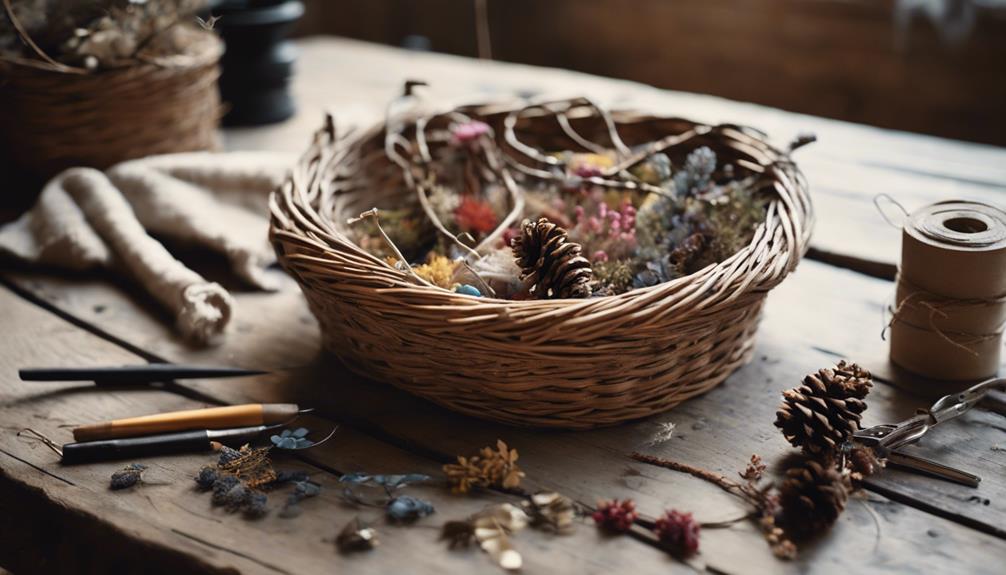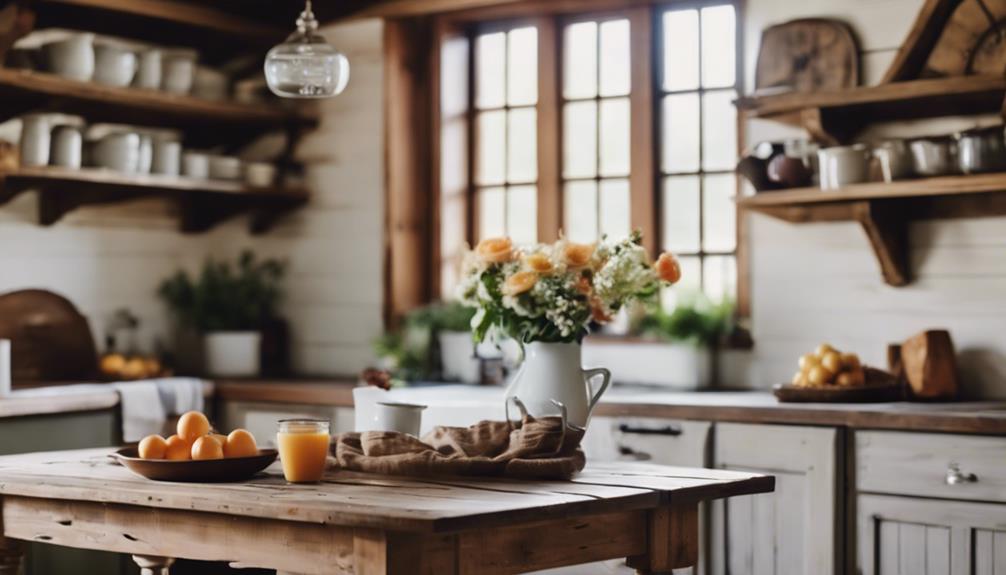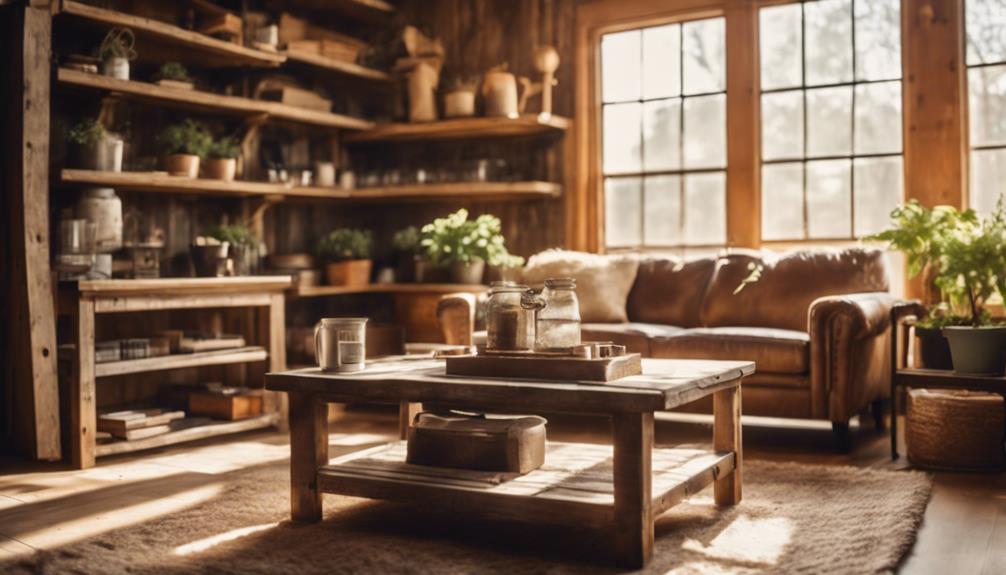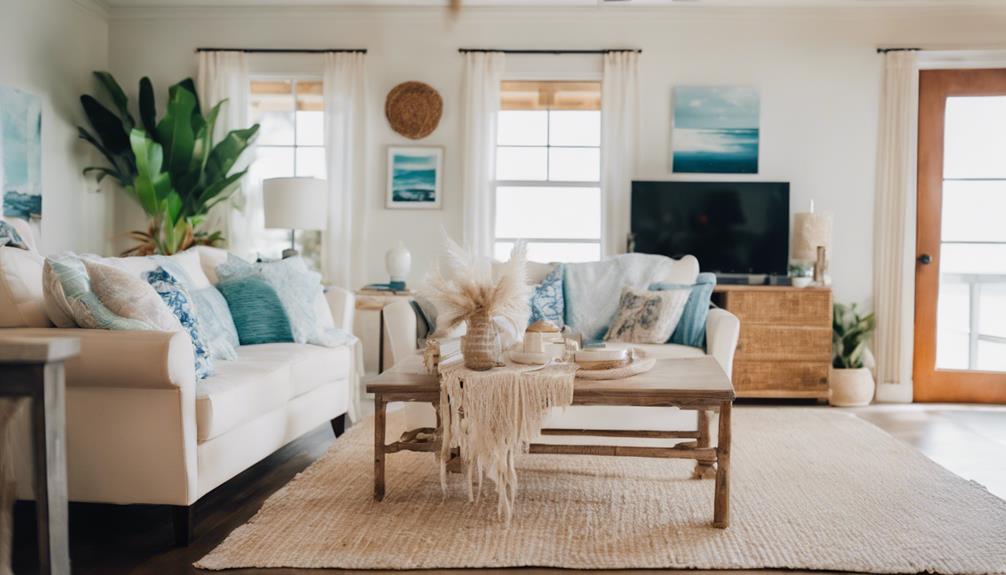As we started on our remarkable hallway makeover, we transformed this often-overlooked space into a stunning focal point through careful planning, meticulous execution, and creativity. We initiated the transformation with prep work, selecting the perfect paint swatch, Evergreen Fog SW 9130, and a satin finish for a cohesive look. Clever sticker removal techniques and personalized decor and artwork added a unique touch. Thoughtful arrangement of artwork and decor created harmony, while mixing sizes, styles, and unconventional items added visual interest. To achieve a balanced look, we considered size, color, and style, and our hard work paid off, resulting in a beautiful, inviting space that showcased our personal style – and that's just the beginning of our remarkable hallway makeover journey.
Key Takeaways
• A remarkable hallway makeover begins with prep work, paint swatches, and clever sticker removal techniques for a fresh start.
• Selecting a cohesive paint color scheme, such as Evergreen Fog SW 9130, sets the tone for a bright and welcoming space.
• Personalized decor and artwork, including unique displays and custom pieces, add a touch of whimsy and visual interest to the hallway.
• Thoughtfully arranging artwork and decor, considering size, color, and style, creates harmony and visual appeal in the space.
• Final touches, such as pendant lights and mirrors, enhance the ambiance, create the illusion of more space, and add a sense of glamour.
Hallway Transformation Journey Begins
We started our hallway transformation journey by tackling the necessary prep work, scrubbing the walls, washing the trim, and safeguarding the floors to guarantee a smooth makeover process. This essential step paved the way for a successful hallway transformation.
Next, we delved into the exciting task of selecting paint swatches, carefully choosing the perfect hues to bring our vision to life. However, we soon realized that removing stickers from the walls was no easy feat. We employed clever sticker removal techniques, soaking rags in vinegar, scraping off stickers, and using an electric sander for stubborn residue.
After overcoming this hurdle, we strategically hung our beloved artwork collections, personalizing the space with decor and adorning doors with new designs. As we approached the final touches, we took a moment to appreciate the beautiful transformation unfolding before our eyes.
With a sense of achievement, we celebrated with pizza and a series finale, basking in the glorious outcome of our hallway transformation journey.
Painting and Decorating Essentials
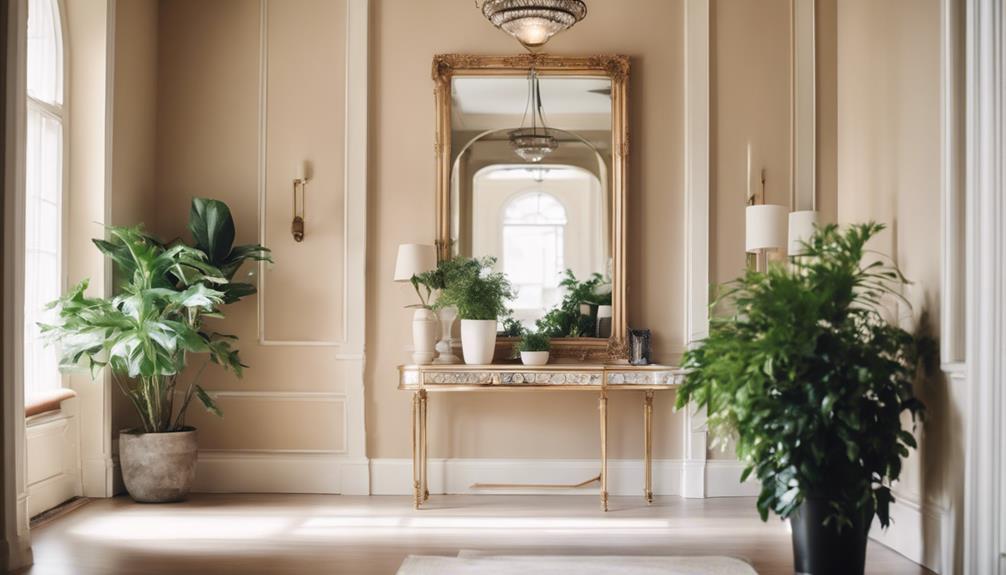
As we move forward with our hallway makeover, we're now focusing on the essential aspects of painting and decorating.
When it comes to selecting a color scheme, we need to take into account the overall aesthetic we want to achieve, factoring in the natural light, furniture, and decor that will complement our chosen hues.
Color Scheme Selection
How do we create a harmonious color scheme that not only complements the adjacent bold and vibrant wallpapered rooms but also transforms the narrow hallway into a bright and welcoming space?
We opted for Evergreen Fog SW 9130 from Sherwin-Williams, the 2022 Color of the Year, as our paint color of choice. To enhance the brightness and create a cohesive look, we chose a satin finish for the paint. By painting the hallway ceiling with Evergreen Fog, we can carry light farther down the hall, making it feel more spacious.
Personalization and style were key factors in selecting a color scheme that complements the adjacent rooms. We collaborated with Minted to design a gallery wall that adds a visually appealing touch to the hallway. The resulting color scheme isn't only harmonious but also reflects our personal style.
As we wanted the hallway to feel bright and welcoming, we made sure to select a color scheme that would achieve this goal. By incorporating our personal style and preferences, we were able to create a unique and inviting space that sets the tone for the rest of the house.
Decorating Accent Walls
By incorporating accent walls into our hallway design, we can strategically draw attention to specific areas, add visual interest, and create a sense of depth. Accent walls can transform a space by adding depth and visual interest through contrasting colors or textures.
Painting an accent wall can create a focal point in a room, drawing attention to architectural features or artwork.
Here are three ways to elevate the design of an accent wall:
- Stripes and patterns: Add a touch of sophistication with stripes, geometric patterns, or textured finishes.
- Bold colors: Make a statement with bold, contrasting colors or metallic paints for a dramatic effect.
- Unique materials: Incorporate wallpaper, wood paneling, or tile to create a one-of-a-kind accent wall that complements the room's decor.
Unveiling Hidden Designs
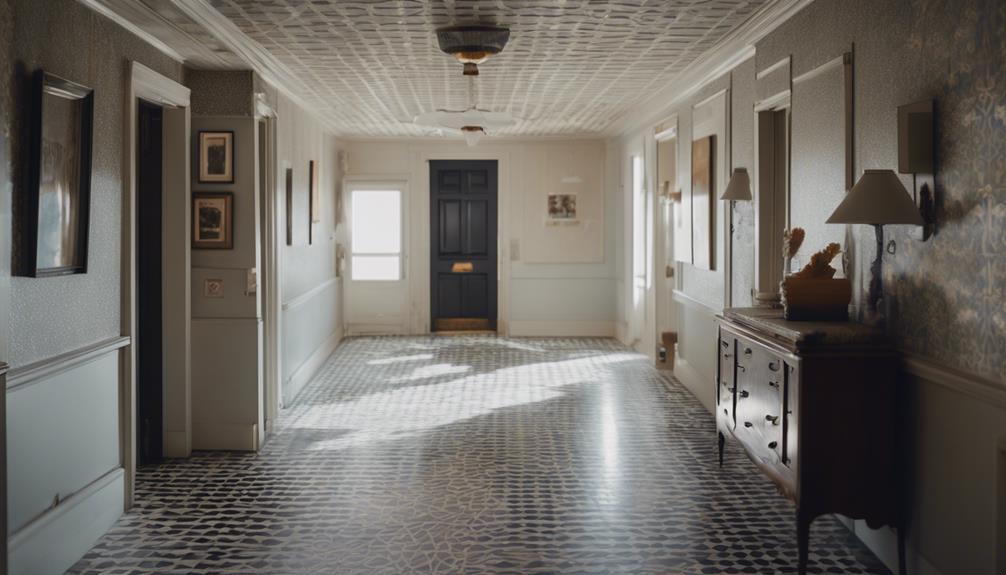
We began by removing old stickers from the doors, which revealed hidden designs that added a personal touch to our hallway makeover.
To remove the stickers, we utilized the vinegar method, soaking rags in vinegar and applying them to the stickers. This loosened the adhesive, making it easier to scrape them off. For more stubborn residue, we used electric sanders to smooth out the surface. We treated both sides of the doors with the vinegar method to guarantee complete sticker removal.
The result was astonishing – the hidden designs on the doors added a fresh and personalized touch to our hallway makeover. By removing the old stickers, we uncovered a unique aspect of our doors that complemented our design aesthetic. This subtle detail elevated our hallway makeover, making it truly remarkable.
As we worked on this project, we realized that sometimes, it's the smallest details that make the biggest impact.
Adding Personal Touches
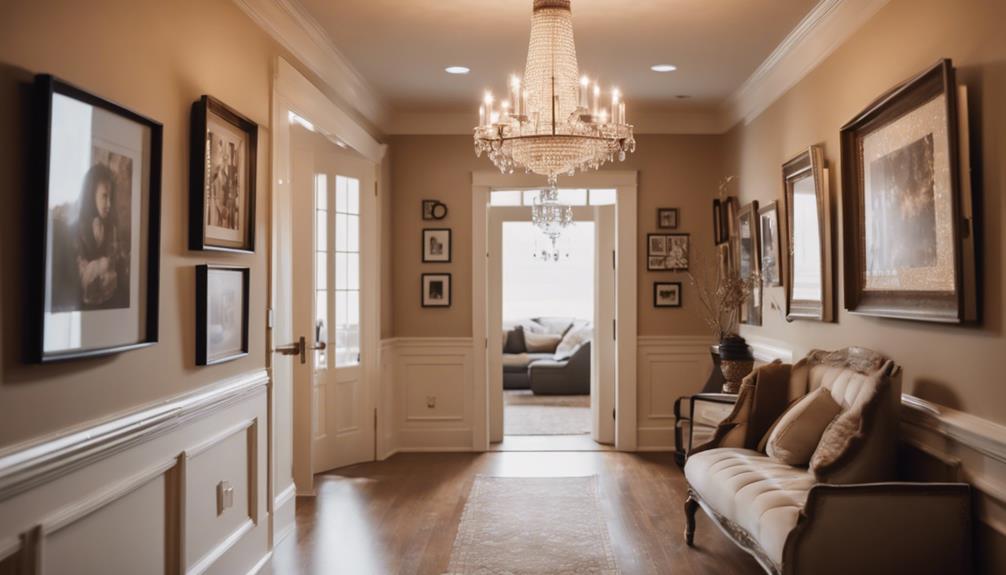
As we move on to adding personal touches to our hallway makeover, we're excited to explore the various ways to make this space truly reflective of our style and personality.
From showcasing unique artwork displays to creating a personalized photo gallery, we'll discover how incorporating meaningful decor pieces can elevate the overall aesthetic of our hallway.
Unique Artwork Displays
Incorporating unique artwork displays into our hallway makeover allows us to put our personal stamp on the space. By doing so, we can create a visually appealing and inviting atmosphere that reflects our personality and style.
Here are three ways we can make our hallway makeover stand out with unique artwork displays:
- Mix and match sizes and styles: Combining different frame sizes, shapes, and styles adds visual interest to our gallery wall.
- Incorporate unconventional items: Using vintage mirrors, upcycled decor pieces, or other unexpected items adds a touch of whimsy to our hallway decor.
- Opt for custom artwork: Commissioning a custom piece or creating our own DIY artwork allows us to add a truly one-of-a-kind touch to our hallway makeover.
Personalized Photo Gallery
A personalized photo gallery wall adds a unique and sentimental touch to our hallway makeover, allowing us to curate a visually appealing display of cherished memories. By incorporating family photos, we create a focal point in the hallway, making it a constantly evolving space that reflects our individual style preferences.
We can mix and match prints and mementos on a gallery wall to showcase our personal memories and experiences, making it a true reflection of who we are. This personalized approach to hallway design allows us to customize the space to our liking, making it feel truly our own.
As we curate our photo gallery, we're not just hanging pictures – we're telling our story. By incorporating personal photos, we're able to put our own spin on the traditional hallway makeover, making it a space that's truly one-of-a-kind.
As a result, our hallway makeover is transformed into a warm and inviting space that's bursting with personality.
Meaningful Decor Pieces
We take our hallway makeover to the next level by adding meaningful decor pieces that reflect our personality, interests, and experiences. These personal touches not only make our hallway unique but also create a warm and inviting atmosphere.
Here are a few ways to incorporate meaningful decor pieces into our hallway makeover:
- Family heirlooms: Adding antiques or family heirlooms can infuse our hallway with history and nostalgia.
- Personalized art: Displaying meaningful artwork or crafts created by family members can enhance our hallway's personalization.
- DIY projects: Customizing decor elements with DIY projects or handmade items can showcase our creativity and personal style.
Balancing Artwork and Decor
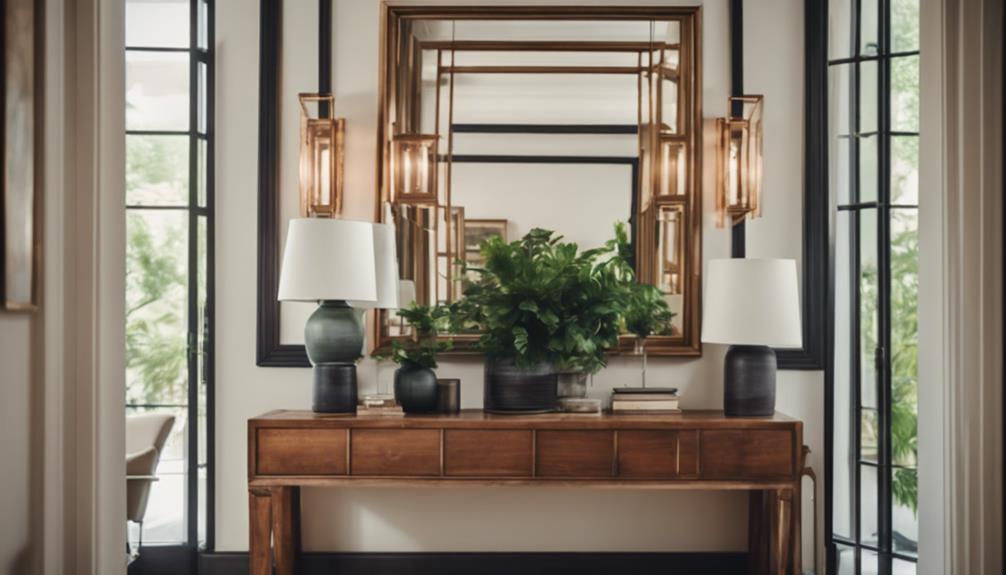
By thoughtfully arranging artwork and decor, we can create a visually appealing hallway that showcases our personal style. When it comes to balancing artwork and decor, the key is to create harmony and visual interest. We consider the size, color, and style of artwork to complement the hallway's design. Mixing and matching different types of art, like photography, paintings, and prints, adds dynamism to the display.
| Decor Element | Placement Tips | Visual Interest |
|---|---|---|
| Artwork | Group similar pieces together | Creates a focal point |
| Mirrors | Hang opposite windows for natural light | Adds depth and brightness |
| Lighting Fixtures | Install above or beside artwork | Highlights the piece |
| Furniture | Place at the end of the hallway for a sense of arrival | Creates a sense of warmth |
Final Touches and Reveals
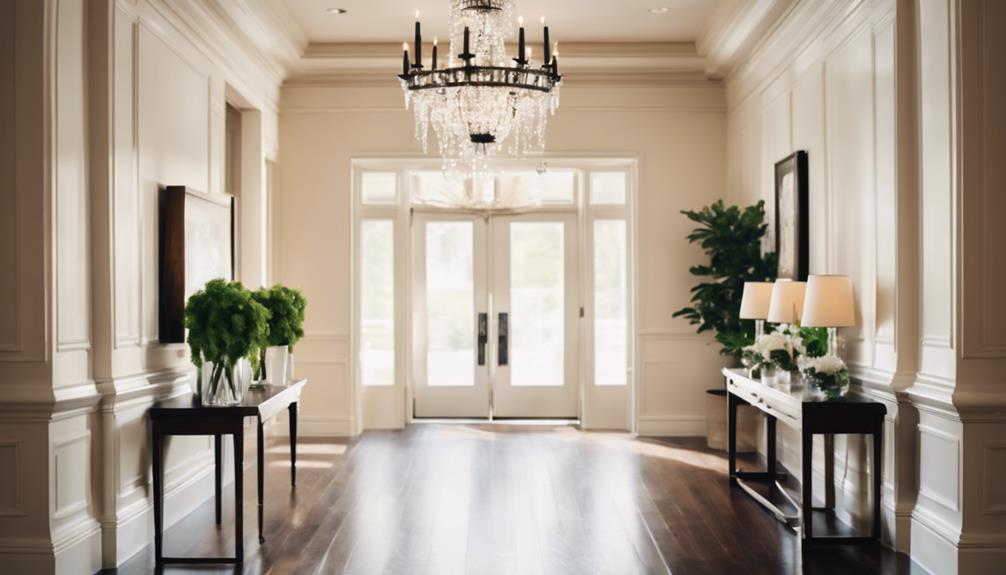
Now that our hallway's artwork and decor are thoughtfully arranged, it's time to put the finishing touches on our remarkable makeover. We're excited to add those final flourishes that will make our hallway look great. To add visual interest, we're incorporating a few key elements to elevate the space.
Here are a few of the details that will take our hallway to the next level:
- Collections of paintings: We're grouping a few of our favorite pieces together to create a cohesive look that adds depth and visual appeal.
- Pendant lights: These stylish fixtures won't only provide ample lighting but also add a touch of sophistication to our wide hallway.
- Large mirror: By placing a large mirror at the end of the hallway, we'll create the illusion of even more space and add a touch of glamour to the overall design.
With these final touches in place, we can't wait to stand back and admire our handiwork. Our hallway looks great, and we're thrilled with the results of our remarkable makeover.
Celebrating a Job Well Done
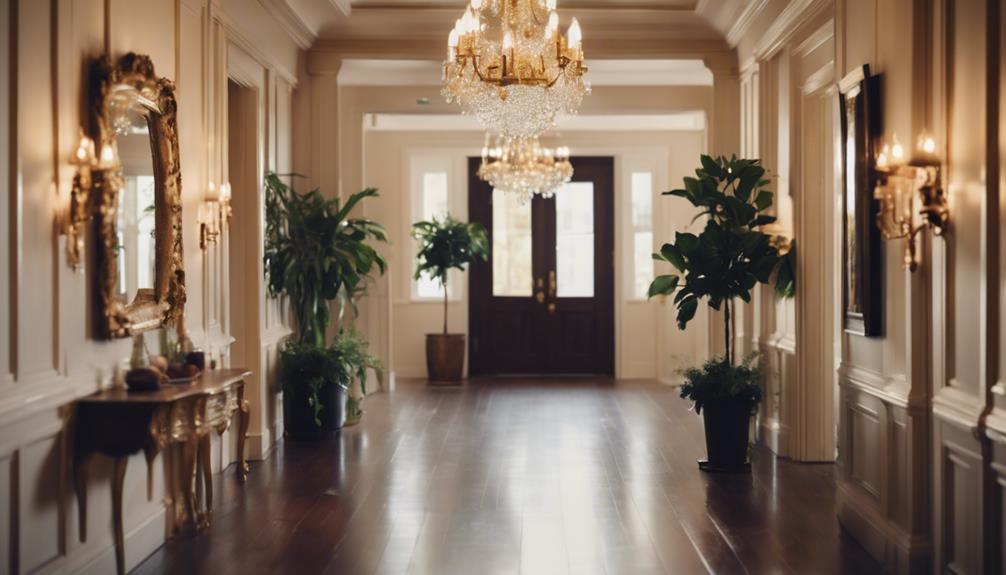
After a year-long renovation process, we're thrilled to stand back and admire our remarkable hallway makeover, reveling in the dramatic transformation from dark and outdated to light and airy. It's a moment to celebrate, and we're doing just that – celebrating a job well done.
The final touches, including personalization with decor and furniture, have enhanced the hallway's aesthetic appeal, making it a true showstopper. We're proud of the hard work that went into this hallway makeover, and it's evident in the enjoyment of the beautiful new decor and ambiance.
To mark the project's completion, we treated ourselves to a celebratory pizza and some well-deserved relaxation in our newly transformed space. As we gaze upon our handiwork, we can't help but feel a sense of accomplishment, knowing that our efforts have paid off.
This hallway makeover is more than just a renovation – it's a reflection of our perseverance and dedication.
Enjoying the New Ambiance
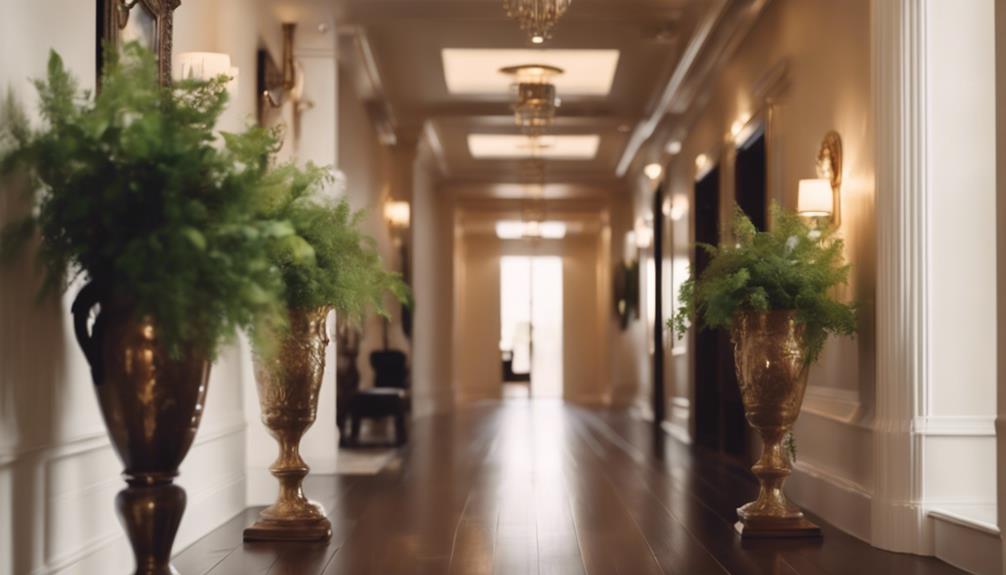
We're savoring every moment in our freshly renovated hallway, where the soft glow of new lighting and the soothing hue of fresh paint envelop us in a sense of serenity. The transformation is nothing short of remarkable, and we're thrilled to be enjoying the fruits of our labor.
Here's what we're loving about our new hallway space:
- Cozy atmosphere: The combination of fresh paint color, enhanced lighting, and personalized touches has created a warm and inviting ambiance that makes us feel right at home.
- Functional storage solutions: Our clever use of shelves and cabinets has maximized storage space, keeping clutter at bay and making it easy to find what we need.
- Personalized decor: From the gallery wall to the stylish accessories, every element has been carefully curated to reflect our personal style and make the space truly our own.
As we indulge in a well-deserved treat, we can't help but feel a sense of pride and accomplishment at the successful completion of our remarkable hallway makeover.
Frequently Asked Questions
How Can I Make My Hallway Look Good?
We're wondering how to make our hallway look good, and we're considering a few tricks to create a more inviting space – adding mirrors, a gallery wall, and some stylish lighting to make it feel more spacious and stylish.
How to Modernise a Hallway?
As we step into our humble abode, we envision a sleek, modern oasis, a far cry from the drab, cramped hallways of yesteryear. To modernize our hallway, we'll swap outdated fixtures for sleek, minimalist designs and infuse the space with vibrant hues and clever storage solutions.
How to Make a Long Hallway More Interesting?
We're tired of our long hallway feeling dull, so we're adding visual interest with a mix of art pieces, bold runners, and strategically placed mirrors to create a more engaging space that reflects our style.
How to Decorate Awkward Hallways?
As we navigate life's twists and turns, we often find ourselves stuck in awkward hallways, but we're not lost, we're just redirecting – we'll cleverly use mirrors, bold art, and stylish lighting to turn these spaces into grand entrances.
Conclusion
As we step back to admire our remarkable hallway makeover, we can't help but feel a sense of pride and accomplishment.
One potential concern, 'Will a bold design choice overwhelm the space?' is alleviated by the clever balancing of artwork and decor. According to interior design expert, Sarah Taylor, 'A well-curated mix of textures, colors, and patterns creates visual interest without overwhelming the senses.'
Our transformed hallway is now a warm, inviting space that showcases our personal style.
